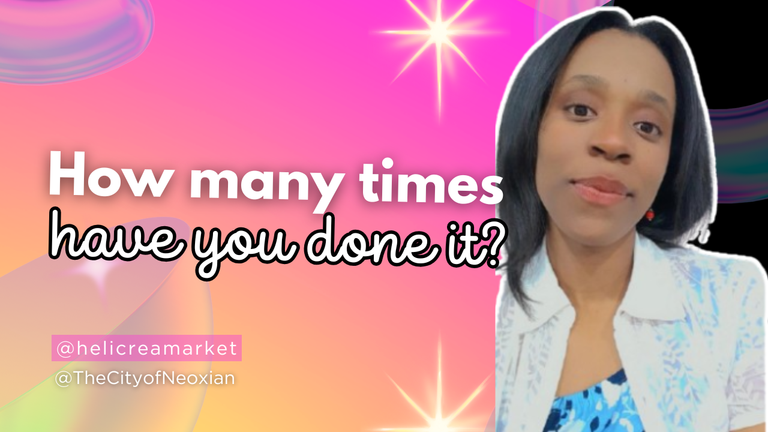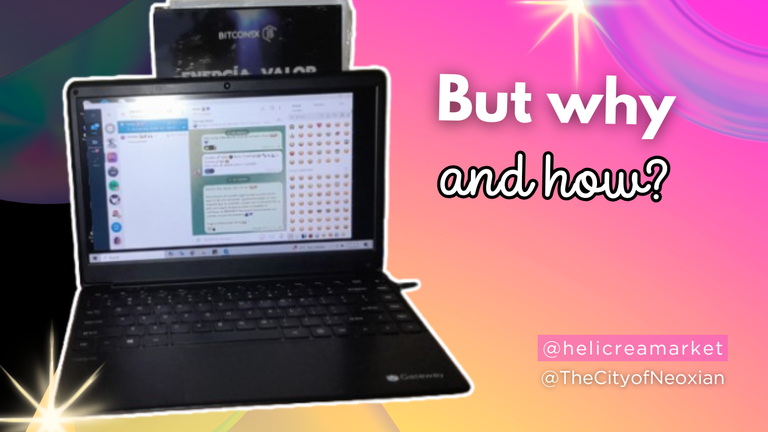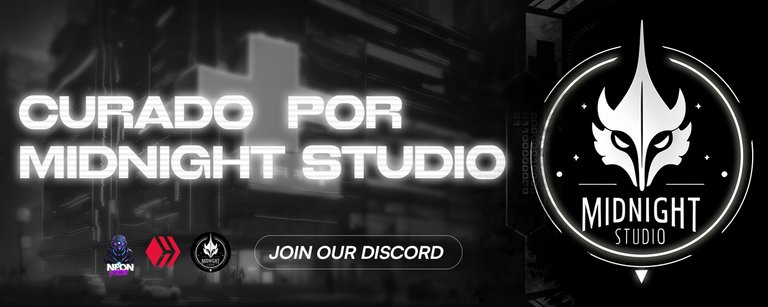
Hey guys! 👋🏽 This is my first post here, and honestly, the topic I’m bringing today is pretty random—but still super important.
It’s no secret that as time goes on, we have (and will continue to have) more “control” over the things that truly matter to us. (Of course, this is only possible with a more decentralized approach.) And I say “control” in quotes because there’s a key factor present across all platforms and ecosystems where we can exercise that control safely. But if we do one thing too often and carelessly, we risk losing it.
I have to admit, this is news to me too! I used to be someone who constantly made “quick changes” when, in most cases, all I really needed was to make one solid and secure decision. 😅
The best part? With this one simple but smart choice, we can avoid a lot of headaches—both in Web3 (when applicable) and outside of it.
So, before changing them all the time, it's critical to define one that is easy to remember, unpredictable, and tough to crack. While there are already tools that help us test how strong our choices are, it's just as important to follow security recommendations from top digital safety experts for 2025. (That way, our account security won’t be compromised.)
And this is exactly how I’d put it:
👉🏽 Less is more
(and no, I’m not talking about character length here). 👀

At the end of this post, I’ll drop some links so you can check out different tools for yourself. ✨
The first key point? Constantly changing your passwords (which is very different from keeping a strong password structure—between 8 to 16 characters) can actually weaken security. Frequent changes increase the chances of falling into predictable patterns, making brute-force attacks easier.
Now, onto the second point: it’s better to keep a password that isn’t too short or too long—but one that’s strong and secure. Also, avoid enabling password hints that some platforms offer. While they might seem helpful, they can actually work against you if someone gains access to your data and uses those hints as a starting point. 😱
Another must is keeping your password manager updated. This prevents passwords from being scattered everywhere or written down where they shouldn’t be.
If you don’t have one yet, the most recommended options are Duo Mobile and Google Authenticator (both available for Android & iOS).
And lastly, one extra layer of security that makes a huge difference: two-factor authentication (2FA)—whenever possible, always enable it! 🔐
I truly believe this information is valuable for the community, especially considering the recent cases of password theft we've seen within this ecosystem. While this isn’t directly related to all the passwords we use on Hive, it’s definitely valuable when creating secure access keys for dApps as Hivers—without falling into predictable choices.
At the end of the day, making these decisions doesn’t have to be complicated—but it does need to add an extra layer of complexity in terms of digital security. ✅
Here are some useful links for more in-depth info on this topic:
🔹 What are brute-force attacks?
🔹 NIST (National Institute of Standards and Technology) Password Guidelines (official documents are customized for each entity under an NIST quotation).
🔹 Bitwarden, a great tool to test your password security.
🔹 What is two-factor authentication (2FA)?
🔹 Top recommended authentication Apps.
If you know of other tools that could be helpful, drop them in the comments!
XO,
- Photos taked by me.
- Banner and desing made in Canva (free version).
- Translation from Spanish to English was done using GPT (free version).


Hola chicos 👋🏽 esta es mi primera publicación aquí y realmente el tema que les traigo es bastante “random” pero igualmente muy importante.
Y es que para nadie es un secreto que cada día que pasa tenemos y tendremos mayor "control" de las cosas que realmente nos importan (por supuesto, esto solo es posible con un enfoque más descentralizado) y lo digo "entre comillas", porque hay una variable que está presente en todas las plataformas y ecosistemas en donde es posible que nosotros podamos ejercer ese control de forma segura, pero que si hacemos "algo" muy seguido y a la ligera corremos el riesgo de perder ese control.
Aunque te confieso que esta noticia es bastante nueva para mí, porque siempre he sido de las personas que tendía a hacer "cambios constantes", cuando en la mayoría de los casos, solo es necesario decidirse por algo "bastante seguro" 😅...
Pero lo mejor de todo es que con esta simple, pero segura decisión, podremos evitarnos muchos malos ratos tanto dentro de la Web3 (para cuando aplique), como fuera de esta.
Así que, antes de cambiarlas constantemente, es impredecible que podamos aprender a definir una que sea fácil de recordar, impredecible e improbable de vulnerar. Y aunque ya hay herramientas que también nos pueden ayudar a evaluar si al definirla lo estamos logrando, es igual de importante poder conocer y poner en práctica varias recomendaciones de sitios especializados en seguridad a nivel digital para este 2025 (para que así la seguridad de nuestras cuentas no se vea vulnerada).
Y es precisamente de esta forma como podría expresarlo:
👉🏽 Menos es más
(un punto muy diferente a la extensión de los caracteres en tus claves). 👀

Al final de esta publicación te dejaré varios enlaces para que puedas utilizar varias herramientas. ✨
Porque la primera parte está enfocada a los constantes cambios que podemos hacer en nuestras contraseñas (algo muy diferente a la estructura en sí, que debe de mantenerse robusta, entre 8 a 16 caracteres) y cómo estos mismos cambios constantes pueden afectarnos, volviendo los "ataques de fuerza bruta" más fáciles de ejecutar, al ser altamente probable que dentro de todos esos cambios podamos caer en un terreno de selección predecible para estos.
Ahora, si nos vamos a lo segundo, sería manteniendo una contraseña que no sea no tan larga ni tan corta, más si segura/robusta e igual evitando activar las "pistas" que algunas plataformas nos pueden llegar a ofrecer, porque aunque esto para nosotros pueda ser una gran ayuda y hasta un gran alivio si se nos llega a dificultar recordar la clave, realmente estamos ofreciendo información que puede ser utilizada en nuestra contra (en el caso de que accedan a nuestros datos para hacer ese primer contacto). 😱
También es muy importante que podamos mantener actualizado nuestro gestor de contraseñas, ya que esto nos evita el tener las claves regadas por todos lados o donde quiera que las lleguemos a anotar.
Si aún no dispones de uno, los más recomendados son Duo Mobile y Google Authenticator (ambos están disponibles para Android y IOS).
Y un último punto que también es importante y nos permite agregar una barrera extra de seguridad es la verificación de dos factores (en los casos en las que esta pueda ser aplicada). 🔐
Siento que esta información puede ser de gran interés y utilidad para la comunidad, sobre todo por los recientes casos de robos de claves que hemos podido conocer aquí dentro del ecosistema. Si bien, esta información no está relacionada directamente a todas las claves que podemos utilizar aquí en Hive, si es de gran utilidad para las claves de acceso a dApps que sí podemos crear como Hivers de forma segura y sin caer en decisiones predecibles.
Decisiones que no tienen por qué ser complicadas de realizar, más sí generar un gran nivel de complejidad en cuanto a seguridad a nivel digital se refiere. ✅ Igualmente, aquí te dejo varios enlaces en los que puedes obtener información más extensa y referente a este tema:
🔹 ¿Qué son los ataques de fuerza bruta?
🔹 NIST(National Institute of Standards and Technology) Password Guidelines (igualmente el documento oficial es personalizado para cada entidad y bajo cotización del NIST).
🔹 Bitwarden una herramienta ideal si deseas poner a prueba la seguridad de tus claves.
🔹 ¿Qué es la autenticación de dos factores?
🔹 Apps de autenticación más recomendados.
Recuerda que si conoces otras herramientas que puedan sumar valor, puedes dejarlas en los comentarios.
XO,
Fotos tomadas por mí.
Banner y diseños realizados en Canva (versión gratuita).
Traducción de Español a Inglés fue realizada con GPT (versión gratuita).

Posted using Neoxian City


